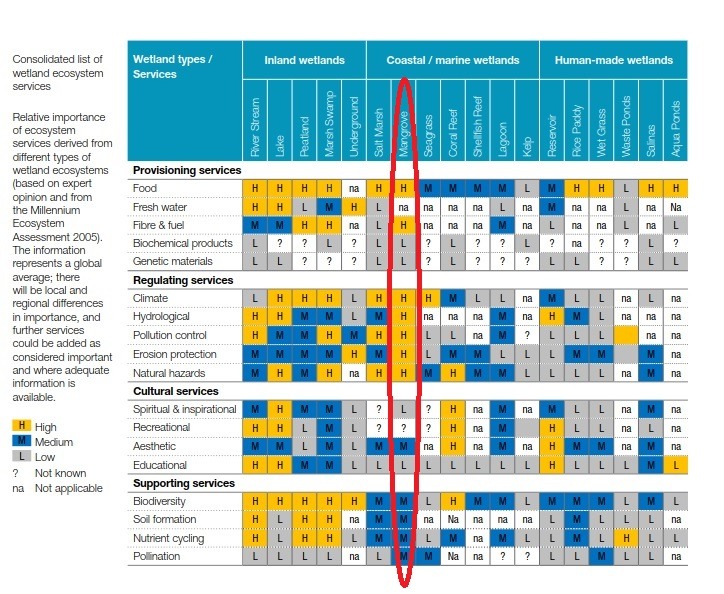Ramsar Convention Releases Global Wetland Status Report
The 2018 "Global Wetland Outlook" highlights continuing declines in wetland extent (about 35% lost since 1970) and delves into trends, drivers of change, and steps needed to maintain or restore these critical ecosystems, both for the survival of nature and society.
Today the Ramsar Convention released its 2018 report on the state of the world’s wetlands, a diverse type of ecosystem in which mangroves are included. This report summarizes wetland extent, trends, drivers of change, and the steps needed to maintain or restore their ecological character. Despite the highlighted result that 35% of wetlands have been lost since 1970 (a rate 3x greater than forests), action on wetlands remains minimal by policy and decision-makers. This fact doesn’t bode well for nature or people. Wetlands provide essential ecosystem services (i.e. water purification, protection from floods) and livelihoods for millions of people. They also store more carbon than any other ecosystem.

The largest swath of wetlands is in Asia (32% of the global area), where also the largest containment of mangrove area remains. 17% of mangrove species assessed are globally threatened, with 3% labeled critically endangered. Particular areas of concern are the Atlantic and Pacific coasts of Central America, with up to 40% of species threatened with extinction. The estimated losses of ecosystem services from mangroves and tidal marshes for a 14 year period (1997-2011) were US$7.2 trillion. Conversion for agriculture or aquaculture is the primary driver of mangrove loss, particularly in Southeast Asia. These changes in mangrove cover can be seen on an annual basis via Global Mangrove Watch for various years.


Drivers of these declines can be direct or indirect. For Ramsar, direct drivers refer to natural or human-induced causes of biophysical changes at a local to regional scale. Indirect drivers have a broader, scattered effect, mostly by influencing direct drivers, and often relate to institutional, socio-economic, demographic and cultural processes. Human-induced drivers include land use change, climate change, sea level rise, water abstraction, introduction or removal of species, resource consumption and external inputs (e.g., fertilizers).
Water quality is in decline due to a wide range of pollutants such as plastics, pharmaceuticals, hormones, industrial chemicals, and other products. It is projected that by 2050 1 in 3 people will be at high risk of nitrogen and phosphorus pollution and 1 in 5 will be at high risk of water pollution from Biochemical Oxygen Demand. Wetlands maintain the global water cycle through complex hydrological and biogeochemical processes, such as the uptake and retention of nutrients and maintaining normal levels, volume, timing, and frequency of water flows. However, increasing human demands and changes in precipitation due to climate change create competition for available water, and that supply has been subject to increasing pressure from consumption and pollution as populations increase. Wetlands are one of the most biologically productive ecosystems; this productivity varies with wetland type, and mangroves remains the highest compared to marshes and peatlands, which would tend to support high animal diversity. This can be greatly affected by agricultural runoff and conversion.

Responding to these multiple challenges, management, investment, knowledge, and the tools of institutions and governance are all required to stop and reverse these staggering declines and focus on conservation and wise use. These losses have serious implications for society. One critical response is the designation of Ramsar Sites, which are internationally important wetlands, that make up one of the world’s largest networks of protected areas. There are more than 2,300 Ramsar Sites covering nearly 250 million hectares, approximately 13-18% of terrestrial and coastal wetlands. Wetlands also need to be better integrated into planning and implementation of development agendas, like international policy frameworks such as the Sustainable Development Goals (SDG 6.6.1).

The aim should be for no net loss, which might be achieved through application of economic and financial incentives, such as tax provisions or subsidies. Further responses to mitigate impacts are described in the report. The Convention lays out a blueprint for saving these critical ecosystems via its Strategic Plan and by working with partners.